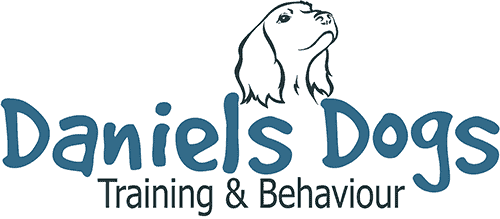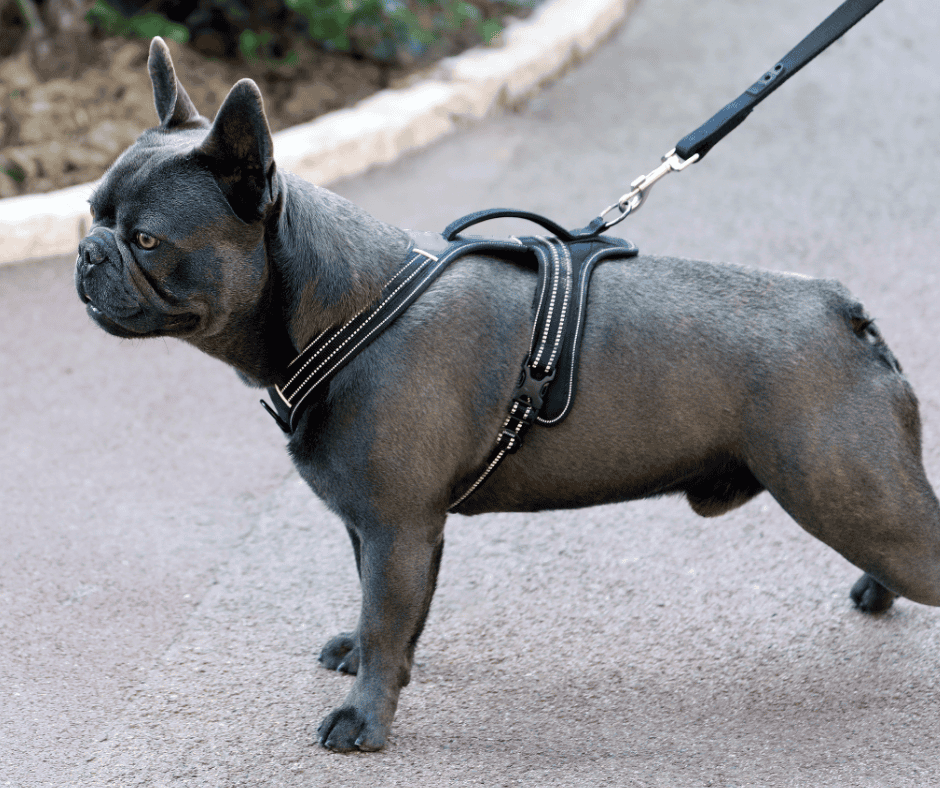As a qualified puppy trainer and Clinical Animal Behaviourist I encounter this very often. It’s not just the harness – it can be a collar, lead, coat, muzzle – or anything we need to ‘put on’ our pooches, but the most common problem one of all seems to be the harness. Here I shed some light on why our dogs might not be keen on their harnesses, and what we can do to help.
So why do so many dogs dislike their harnesses? Once we start to think about this from the dog’s point of view, we can start start to make sense of it.
For many puppies and dogs, it can boil down to the very first time the harness was put on them. Imagine something completely alien to you suddenly being strapped onto your body. It is definitely going to feel weird, and very possibly uncomfortable too.
Some of the reasons why your dog might not like their harness:
Smell – If it’s a brand new item, it may have unpleasant factory smells on it, and we know dog’s noses are highly sensitive. New items are not going to have the dog’s own or their caregiver’s familiar scent and may therefore be perceived as something to be cautious/wary or even scared of.
Sound – think about where the harness sits on the dog (collars too!), the clip or buckle may be quite close to the dog’s head and ears, and the sound of the clip being done up can be surprisingly loud. Velcro fastenings, especially new ones, can be very loud and a very unusual, unfamiliar and potentially scary sound.
Touch – Remember that feeling of a new pair of shoes; how uncomfortable it can be wearing them for the first time. Imagine you’d never worn shoes before, and always been barefoot, then imagine how a puppy or adult dog might feel if they’d never worn a harness before. Maybe it rubs and makes your skin sore, or maybe it’s too tight (causing soreness or pain), or too loose, rolling around and being very irritating. Some dogs are just more sensitive to anything touching them, possibly due to tactile sensory processing differences within their nervous system. For them, the harness may feel irritating, unpleasant, or even unbearable, and professional help should be sought to determine what accommodations will work for those dogs.
Many dogs get worried about things going over their heads – I always shudder when I see people put harnesses on over the head and the dog’s ears get pulled back – think about how uncomfortable or even painful that might feel.
Often with new harnesses it can be tricky for us to know which strap goes where, which buckle snaps onto which clip, and so we may end up pulling the dog around, repeatedly lifting legs, accidentally trapping skin or fur.
Restriction and lack of agency – wearing a harness also usually means restriction of some kind, as it generally has a lead attached. This can easily lead to frustration, anxiety or even fear, brought about by the feeling of lack of control and agency, especially if going out into the world for the first few times. Pulling on the lead might cause skin to get trapped or pinched, or cause pain from pressure.
These are just some of the reasons why dogs can quickly build a negative association with the harness. We often see this as the dog moving away or trying to hide when they see the harness come out, or cowering, stiffening and freezing as the harness is being put on.

How can we help?
Prevention is always better and far easier than trying to fix things down the line. So, whenever you need to introduce a new piece of equipment to your dog, the following initial tips will help:
- Empathy and understanding are crucial here. We should always prioritise our dogs welfare. It’s not about forcing compliance or obedience but rather about building trust and ensuring that our dogs feel safe and secure every step of the way.
- Practice with the harness away from the dog first, to make sure you know which bit goes where, and which strap or clip goes where, so you’re not fiddling around trying to work this out while putting it on your dog.
- Introduce the harness gradually. Start by simply letting them sniff and investigate the harness in their own time. Place the harness on the ground, preferably in a large open space, and let them spend some time investigating it.
- You can then very gradually progress to gently touching their back or shoulder with the harness, and carefully placing one or more of the straps over the neck or back. Pair that with praise and treats to create positive associations.
- Practice clipping up the buckles or opening and closing the velcro at some distance away from the dog initially, and each time you do it pair it with a treat. Observe their body language carefully and if they seem comfortable you can gradually start to move closer.
- Always make sure it’s a positive experience, harness time should be synonymous with fun rewards! Practice this whenever you bring out the harness, use treats at the same time and include lots of praise and affection. This will help build that positive association reinforcing the idea that wearing the harness leads to good things, and can also provide a bit of a distraction with that initial feeling of strangeness when they start wearing it.
- Ensure the right fit. Dogs come in many shapes and sizes, so it’s crucial to find a harness that fits comfortably. Avoid anything too tight or restrictive or too loose and think about opting for a padded harness that can help minimise any rubbing or chafing. Comfort is key! My preference is usually for an H-shaped harness that clips up around the neck and back and is fully adjustable.
- Practice, practice, practice. Repetition is the name of the game when it comes to this kind of training. Start with short sessions and gradually increase the duration as your dog becomes more comfortable. Avoid the temptation to rush ahead, going too fast could easily lead to setbacks undoing all your good work.

If your dog’s harness aversion persists despite all your best efforts, don’t hesitate to seek help from a qualified and accredited dog behaviourist.
If you would like to find out how I can help you, please take a look at my behaviour page here or schedule in a free 15-minute discovery call with me here so that we can have a chat and look at what support you might need.
Remember patience and empathy are your greatest allies in helping your dog overcome their harness issues. By looking at things from their perspective and taking a proactive welfare driven approach we can help our dogs feel much more comfortable and confident wearing any kind of equipment.
Happy harness training!





